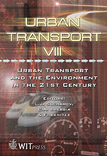Study On Power Transmitting Efficiency Of CVT Using A Dry Hybrid V-belt
Price
Free (open access)
Transaction
Volume
60
Pages
10
Published
2002
Size
420 kb
Paper DOI
10.2495/UT020781
Copyright
WIT Press
Author(s)
J. Yamaguchi, K. Okubo, T. Fujii, R. Kido & M. Takahasi
Abstract
This paper presents the net power transmitting efficiency of CVT using a newly developed dry hybrid V-belt. The efficiency was measured by using a devised testing machine, which eliminates other power losses due to peripherals such as shaft flanges. Torques on both pulleys were measured with high accuracy by using strain gauges which were glued on the cantilever shafts. The CVT efficiency is divided into three regions with respect to applied torque. At a low range of applied torque: region I, the efficiency of CVT increases sharply with respect to the applied torque, because the bending loss is almost constant for applied torque but the torque increases the total transmitting power. At region II (a middle range of applied torque), the efficiency is also constant with respect to transmitting torque since the relative energy loss due to belt bending decreases while the energy loss due to elastic slip increases with increasing the transmitting torque. They are equivalent with each other at this region, The efficiency sharply decreases at region III due to the remarkably increasing of the slip. The transmitting efficiency increases with the low contraction force. The CVT shows the high transmitting efficiency at the speed ratio 1.0. The transmitting efficiency decreases when the CVT system has the misalignment, because the sharing deformation of the belt strand influences the transmitting efficiency as well as the bending deformation. The appropriate initial setting misalignment exists to reduce the influence of the misalignment. It is found that the relationship between the traction coefficient and the transmitting efficiency is independent on the contraction force, speed ratio and the misalignment. The traction coefficient could be a non-dimensional applied torque for characterizing the efficiency of the dry hybrid V-belt type CVT.
Keywords





